#himalayan griffon
Explore tagged Tumblr posts
Text
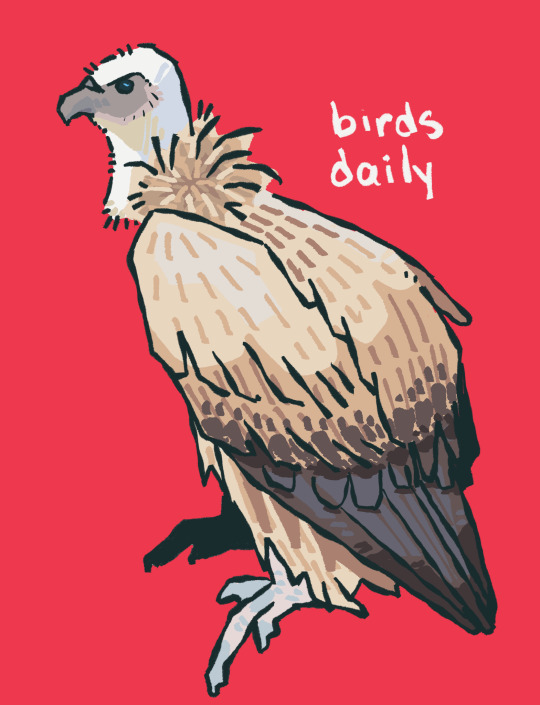
day 13
today's bird is the himalayan griffon vulture!
request from @squidthemayo !!
#couldn't find any fun facts about this guy so if you have any pls tag them!!#also srry for no bird yesterday i had this one all prepped i just got sleepy#artists on tumblr#bird art#birds#ornithology#accipitriformes#accipitridae#vulture#himalayan vulture#himalayan griffon
304 notes
·
View notes
Text
Hey! Hey look at this! Vultures eat dead bodies so you don't have to! Go support vultures! They're beautiful animals and important to the environment! They help slow the spread of diseases, and keep the environment clean. Without scavengers like them, the natural world would be littered with diseased and rotting animals. Below are links to several organizations where you can donate to conserve their populations, as well as several pictures and facts about some of the endangered vultures of our world.
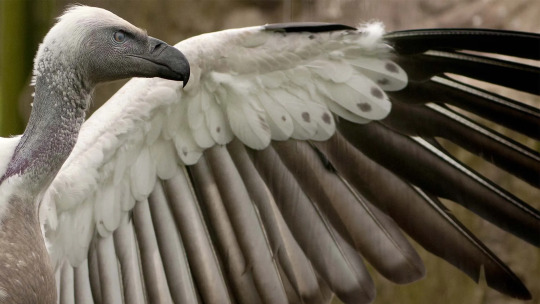
Pretty vultures for you!
Bearded vulture:
Near threatened worldwide, but endangered in europe! They cover themselves in red and orange pigment to show status, and thrive in the desert! Their diets are 80% bones, which most scavengers either can't digest, or simply avoid.
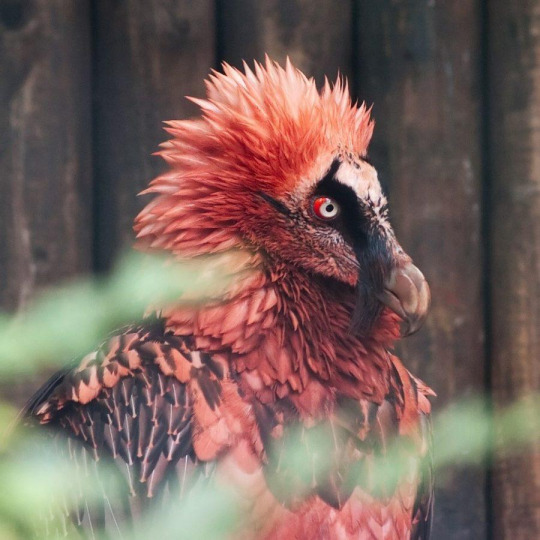


Egyptian vultures:
Also known as the white scavenger or the pharaohs chicken, the endangered egyptian vultures are native to egypt (no surprises there) They were often seen as symbols of purity and motherhood!
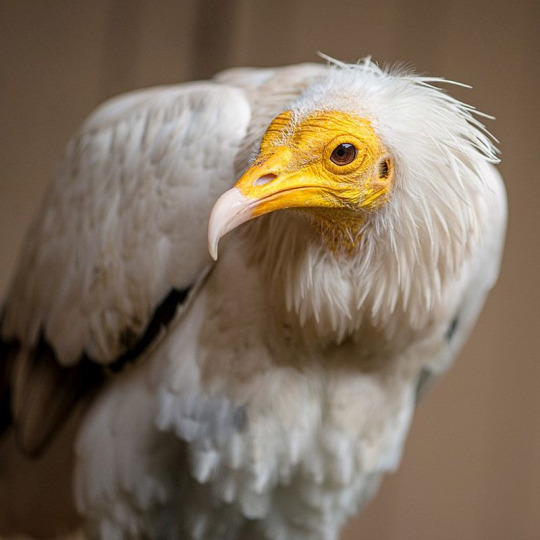


Cinereous Vultures
Look. at. them. Endangered, with a decreasing population! These birds are large. seriously, big boys. They can be brown and white, and are also quite floofy! They live in europe and asia, often in mountains!
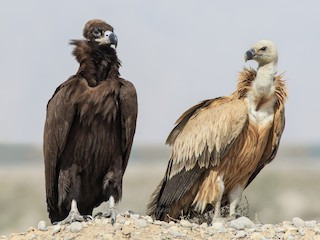
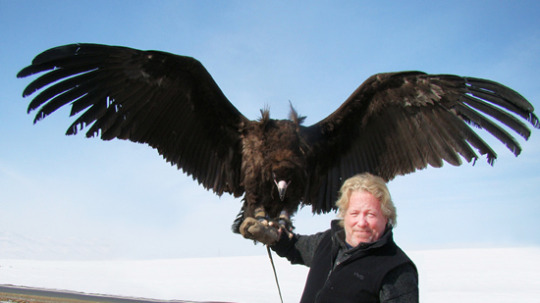
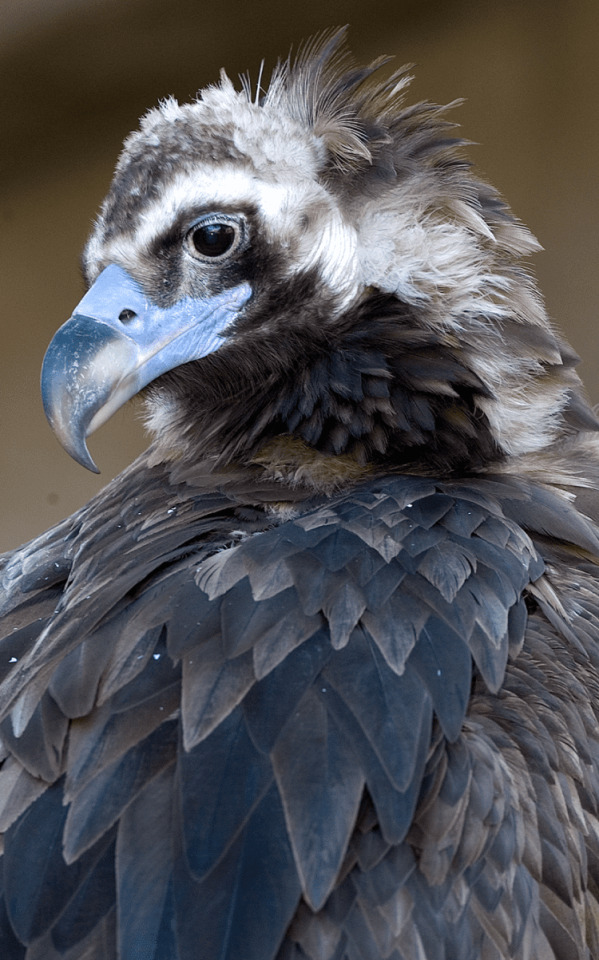
Himalayan Griffon vultures
With a threatened population, the big birds of the mountains. They live on snowy peaks, and are generally docile.
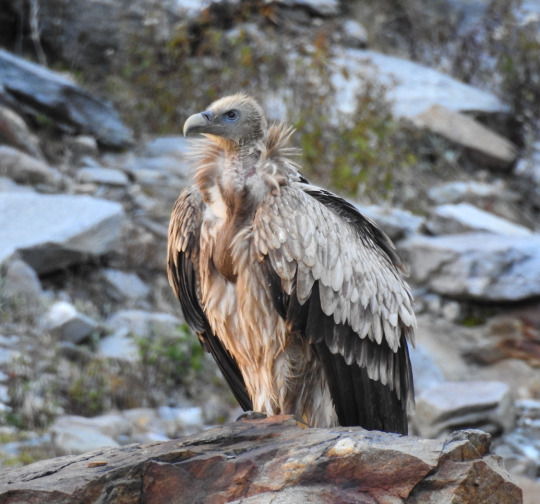
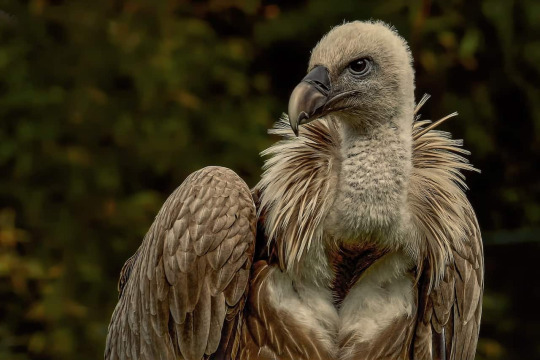
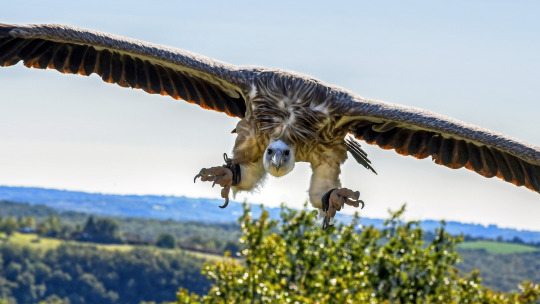
Cape vultures
These all white birdies typically forage in groups, and live in southern africa. They're also at risk, due to lack of food and getting poisoned.
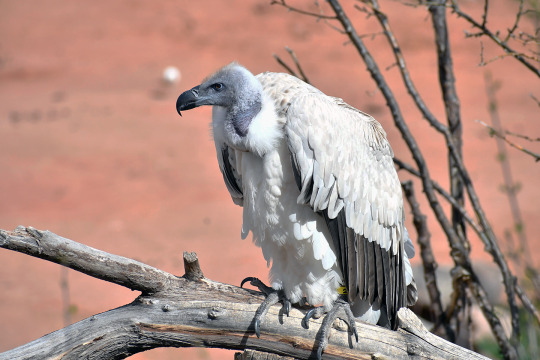


White backed vultures
Another endangered vulture, they often live in desert climates and can have up to 6 foot wingspans.


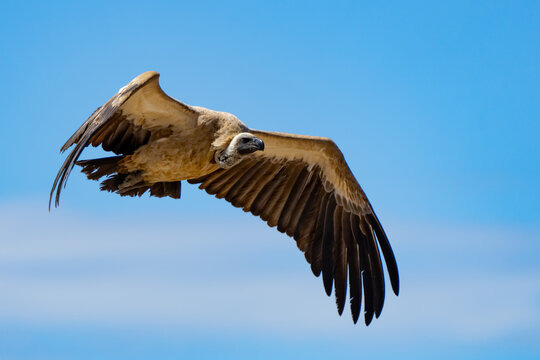
These are not the only endangered vultures! There are many more, listed in the article below.
#local plague doctor#endangered species#endangered#endangered birds#vultures#bearded vulture#white backed vulture#cape vulture#Himalayan griffon vulture#egyptian vulture#cinereous vulture#vulture#vulture community#animal conservation#protect the earth#birds of prey#spread awareness
49 notes
·
View notes
Text
SINCE I FIRST discovered sky burial I have known what I wanted for my mortal remains. In my view burial by animals is the safest, cleanest, and most humane way of disposing of corpses, and offers a new ritual that might bring us closer to the realities of death and our true place on this planet.
In the mountains of Tibet, where wood for cremation is scarce and the ground too rocky and frozen for burial, they have practiced celestial burial for thousands of years.
A dead man is wrapped in cloth in the fetal position, the position he was born from. Buddhist lamas chant over the body before it is handed over to the rogyapa, the body breaker. The rogyapa unwraps the body and slices into the flesh, sawing away the skin and strips of muscle and tendon. He sharpens his machete on nearby rocks. In his white apron, he resembles a butcher, the corpse appearing more animal than human.
Of all the death professionals in the world, rogyapa is the job I do not envy. A rogyapa interviewed by the BBC said, “I have performed many sky burials. But I still need some whiskey to do it.”
Nearby, the vultures have already begun to gather. They are Himalayan griffon vultures, bigger than you’d imagine, with nine-foot wingspans. The vultures tighten ranks, emitting guttural screeches as men hold them back with long rods. They huddle in groupings so tight that they become a giant ball of feathers.
The rogyapa pounds the defleshed bones with a mallet, crushing them together with tsama, barley flour mixed with yak butter or milk. The rogyapa may strategically lay the bones and cartilage out first, and hold back the best pieces of flesh. He doesn’t want the vultures to have their fill of the best cuts of meat and lose interest, flying off before the entirety of the body is consumed.
The signal is given, the rods are retracted, and the vultures descend with violence. They shriek like beasts as they consume the carrion, but they are, at the same time, glorious sky-dancers, soaring upward and taking the body for its burial in the sky. It is a virtuous gift to give your body this way—returning the body back to nature, where it can be of use.
— From Here to Eternity: Traveling the World to Find the Good Death, Caitlin Doughty
#from here to eternity#caitlin doughty#sky burial#tibet#celestial burial#rogyapa#buddhism#himalayan griffon vultures#tsama#carrion#Ask a Mortician#From Here to Eternity: Traveling the World to Find the Good Death#books#bookblr#death positive#death positive movement#nonfiction#science#history#travel#anthropology#memoir#sociology#atypicalreads#deathcare#cw death#death acceptance
2 notes
·
View notes
Photo

"Himalayan Griffon Vulture" photographed by Hussein Latif
11 notes
·
View notes
Text

A Himalayan Griffon Vulture, the second largest of the Old World Vultures, showing off its fake eyes.
Photo husein_latif
2K notes
·
View notes
Text

Himalayan Griffon Vulture...𓅂
54 notes
·
View notes
Note
🥚i see u filling my dash with eggs and beasts and idk what its for but im taking this opportunityt o ask what your favourite species of vulture is if you have one. mine is the bearded vulture
I love all the vultures, both old and new world, so it's a really tough choice, but if I had to choose one
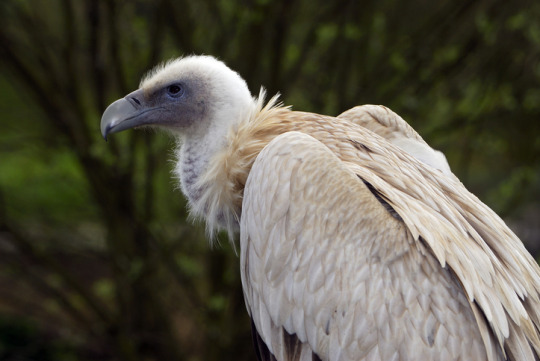
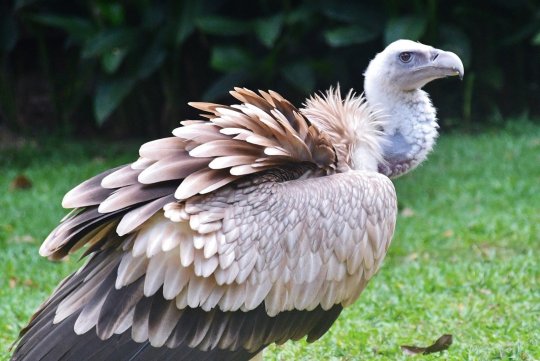
It'd probably be the Himalayan griffon vulture (Gyps himalayensis)
65 notes
·
View notes
Text
General Vulture Fun Facts
Just to share some more love!
Vultures in general
Vultures are critically important to keeping an ecosystem healthy by cleaning up carcasses and preventing the spread of disease. They have incredibly acidic stomachs with a pH of about 1, causing them to be able to digest diseases including rabies and anthrax. Through eating carrion, they destroy harmful bacteria found in rotting meat.
Vultures are a major conservation concern. Of the 23 species of vultures, 9 are critically endangered, 2 are endangered, 2 are vulnerable, 3 are near threatened, and 7 are least concern.
Most vultures have featherless necks and heads. This is partially to help them stay clean when they feed by reaching their heads into carcasses; with bald heads, they can more efficiently clean their heads and the sun can bake off detritus more easily. This adaptation also helps them regulate their temperatures.
Old World and New World vultures are only superficially similar in filling similar ecological niches. I'll go into more depth below!
Old World Vultures
Old World vultures are members of the order Accipitiformes and family Accipitridae, which includes hawks and eagles. Many of these vultures are no more closely related to one another than they are to other members of Accipitridae.
They can be generally divided into two major clades, Aegypiinae (cinereous, red-headed, lappet-faced, white-headed, hooded, and all Gyps vultures) and Gypaetinae (bearded, palm-nut, and Egyptian vultures).
While some New World vulture species forage using their sense of smell, Old World vultures have poor senses of smell and find food exclusively via sight.
Many Gyps vultures are known as griffon vultures in at least one of their common names (G. fulvus, Eurasian griffon vulture; G. coprotheres, cape griffon; G. rueppelli, Rüppell's griffon vulture; G. himalayensis, Himalayan griffon vulture).
Most Old World vulture species are of conservation concern. The most dramatic declines are in Asia due to accidental poisoning by diclofenac, a problem known as the Indian Vulture Crisis. It is caused by cattle being treated with the drug diclofenac; when these cattle die they are consumed by vultures, but diclofenac causes fatal kidney failure in vultures. This crisis largely affects Gyps and red-headed vultures and has caused a 99% decrease in Indian vulture populations since about 1990. Major declines in Africa are caused by poaching and intentional poisoning.
In ancient Egypt, vultures were associated with purity and motherhood as well as the cycle of death and rebirth.
New World Vultures
New World vultures are placed in the family Cathartidae, but nobody can agree where to put Cathartidae. It was originally in the order Falconiformes. It was then moved to the order Ciconiiformes (storks and herons) due to erroneous studies but later removed. New World vultures are now considered to be most closely related to Accipitriformes raptors, and Cathartidae may now be placed in Accipitriformes with the Old World vultures, or in its own closely-related order Cathartiformes.
These vultures can be generally grouped into two clades, one consisting of the black vulture and the Cathartes vultures, and the other including the king vulture and both species of condor.
New World vultures do not posses a syrinx (bird voice box), and so can only hiss and grunt as vocalizations.
Cathartes vultures, meaning the turkey vulture and both yellow-headed vultures, are some of the few birds to have a good sense of smell. This sense makes them the most efficient birds at finding carrion.
Black and king vultures as well as condors will follow Cathartes vultures to carcasses, where they generally tend to dominate. Condors and king vultures are larger than Cathartes vultures, while black vultures are more aggressive. However, these larger vultures are needed to tear open tough carcasses. Therefore, large vultures and Cathartes vultures rely on one another to effectively access food.
New World vultures do not build nests but rather lay their eggs directly on bare surfaces such as cliff ledges.
They cool off via urohidrosis, or urinating on their legs. They cool off as the waste evaporates, similar to how humans cool off as sweat evaporates. This process also kills bacteria accumulated on the legs at carcasses.
King and black vultures are often found depicted in Mayan codices. The king vulture is considered a divine messenger and used to depict the thirteenth day of the month, while the black vulture is associated with death and aggression.
New World vultures may vomit when threatened in order to distract the threat and to lighten themselves enough to take off quickly.
169 notes
·
View notes
Text

[https://www.inaturalist.org/observations/64445158] Himalayan Griffon || Gyps himalayensis Observed in China Near Threatened in location of observation
himawalkin' griffon, him got places to be griffon
8 notes
·
View notes
Note
yo.. do you envision daleth as a specific species of vulture or just. vulture in general
Ok so it's a little difficult because of the amount (23) of different kinds of vultures. To my knowledge (hardly an expert lol), vultures are split into two (genus?) groups: New World (North, Central, and South America) and Old World (Africa, Asia, and Europe). There are a few physical differences that tend to set the two apart, e.g. old world vultures tend to have longer necks and be bigger (not always), and the general existence of a voice box (Old World has it, New World doesn't). So it's not like you'll be often mixing them up, especially if you're listening for them.
There are a few more things I could talk about, but, if I were to guess, Daleth was *originally* based on old world vultures (bc he's an old man /j) such as: the Indian Vulture, Lappet-faced Vulture, Eurasian Griffon Vulture, Rüppell's Vulture. Also what I like to call 'what you think of when someone says vulture'.
I wanted to joke about how Daleth is a Bearded Vulture, however, despite its beauty, it has a big difference in how the neck and head are drawn and it just doesn't give enough Daleth vibes so :( I also wanna include the Himalayan Vulture as an honorary member because it's one of the largest old world species and among the largest true raptors.
So, while I can't pinpoint exactly what vulture Daleth could be, I'd imagine he'd be something along with those mentioned. Hope this helped! :3
(if I messed anything up here it's because I'm super tired lol)
#gargh. vultures my beloved. and totally not because of just Daleth ❤️#listen. whether or not its selfish or whatever#talking about vultures is what educates people on their necessary existence in an ecosystem. and makes them aware of how they're all DYING.#two of the vultures i mentioned are critically endangered. one is vulnerable (population decreasing) and the last (thank goodness) is least#concern#so. LEANR AND SAVE THE BEASTS THEY'RE SO COOL AND IMPORTANT GUYSSSS#Fun fact: they are referred to as Committees Kettles and/or Wakes as a collective. isn't that adorable.#anyways thats all i have to say its five am and im tired but i had to answer this NOW lol#hope you enjoyed the info dump bestieeee#sky cotl#sky: cotl#sky children of the light#that sky game#skyblr#sky elders#isle elder#daleth#text post#vulture#leaf flower rambles
4 notes
·
View notes
Text
Possible More AU Variants of Neue
I’m experiencing low motivation for drawing, but I’m still working on the clothing rough drafts.
However, I am gonna be adding more AU Variants of Neue. These variants won’t have a big impact on the story or none at all (at least for now), but I think they’ll be fun to draw.
Now a few of these AUs will be my own version/redesign, not because I don’t like the original concept, this is just my own spin on them.
Dancetale
-IDK what type of dance this Neue will have, since Toriel is Waltz & Sans is Hip-Hop.
-I could see him being one of these options:
•A combination of both
•Waltz or Hip-Hop, or some variation of them
•Something entirely unrelated to both
Birdtale
-While the original just has the characters have wings on their backs (& I’ve seen some with talon/clawed feet), I’m gonna up the “bird” characteristics a bit more.
-The arms will be replaced with wings & the lower parts of the legs will look like talons.
-The nose/top part of the mouth will vaguely look similar to a beak.
-They’ll be based off a species of birds or a combination of 2-3 birds.
•For this version of Neue, he’ll be based off the Himalayan Griffon & the Collared Scops-Owl.
Reapertale
-This version of Neue would be the “child” of Life & Death. IDK what the correct terminology would be for this, but they would “rule” represent the realm between life & death.
-Their name is Purgatory, which might change if I can find a more accurate name for this, & they would play an interesting rule for this AU.
•They would decide if a soul deserves a second at life or if they must pass on into the afterlife.
•This would mainly affect individuals who are in a comatose state, or if they died “too early”.
Oceantale
-While the original was based more on mythical creatures (with the exception of a few), I’m gonna based this Neue’s design off real life sea creatures.
-They could either be based off a singular sea creature, or a combination of 2-3 species.
•For this version of Neue, they’ll be based off the Leafy Seadragon, Lion’s Mane Jellyfish & the Whale Shark.
Angeltale
-The original was similar to appearance of Birdtale, with the characters just having wings on their backs. So I’m gonna change them to look similar to nightmare fuel that is the “biblical accurate angels”.
-They would have 2 forms:
•Their true form which would be the equivalent of “biblically accurate angels”.
•The “Be-Not-Afraid” form which would give them a more “normal” appearance similar to their Undertale counterpart with some angel-like features.
Deltarune
-You know I had to include this for funsies.
-In this AU, Neue would be the son of Sans & an unnamed individual, so his personality would be different.
-His name would be Neuton, & IDK what RPG class he would have yet in the Dark World.
Blank Template
-Now this would be an original AU (unless there’s an AU like this so please tell me if that’s the case).
-Basically everyone would be a blank template of each character:
•Basic Designs with little to no colors (I guess white would be considered a color).
•Bare minimum concept of powers & personality based off the original Undertale characters.
•Little to no facial/emotion expression unless near a large influence of raw emotion.
-This version of Neue would be named “Canvas” (like a blank canvas).
Please comment any suggestions/ideas for these or other AUs that I’m working on.
#underverse#utmv#undertale au#undertale oc#dancetale#birdtale#reapertale#oceantale#angeltale#deltarune#my ocs#oc art#oc#oc artwork#ocs
4 notes
·
View notes
Text
Got another outfit poll for Ryan, 'cause I had a theme in mind that would work more with the formal suit-dress outfit I originally planned on making for my last poll that instead turned into a manwhore outfit (affectionate).
So, one of Ryan's nicknames (back when I watched him) was the "payment vulture," and a vulture themed outfit seemed like a nice idea. The only thing is, which vulture species should I base the outfit on? 👀
Below the keep reading line I'll detail how I vaguely envision each vulture species' outfit to look like. (Also I'll link each of their wikis in case you want to see the vultures in question)
Eurasian Griffon Vulture - A mostly tan-ish/light brown outfit that has dark brown, black, and a lil' bit of off-white detailing. Will probably be wearing some light eyeshadow.
Himalayan Vulture - A mostly white-ish outfit that has a lot of dark brown and a lil' bit of light brown detailing. Will probably be wearing some light blue eyeshadow and/or blush.
White-Headed Vulture - A mostly dark brown/black outfit with white detailing. Will probably be wearing some pink lipstick, eyeshadow, and/or blush.
Bearded Vulture - A mostly rusty orange and dark brown/black outfit with a bit of white detailing. Will probably be wearing black eyeshadow (that sorta resembles the vulture specie's face markings), might wear black lipstick, and will perhaps wear red glasses.
3 notes
·
View notes
Text

Himalayan griffon vulture my favorite animal ever
2 notes
·
View notes
Text

Himalayan griffon Vulture in attack mode
📸 Husein Latif Photography
307 notes
·
View notes
Text
Bhutan Birding Tours Packages: Explore the Avian Wonders of the Himalayan Kingdom
Bhutan, a mystical land of breathtaking landscapes and rich biodiversity, is a paradise for birdwatching enthusiasts. With its pristine forests, diverse ecosystems, and high-altitude habitats, Bhutan is home to over 700 bird species, making it a premier destination for birding expeditions. Whether you are an avid ornithologist or a casual nature lover, Bhutan Birding Tours Packages offer an unforgettable experience filled with rare sightings and picturesque surroundings. Orrog, a leading Bhutan Travel Agency, provides expertly crafted Bhutan Tour Packages that combine adventure, culture, and nature for a truly immersive journey.
Cultural Tours in Bhutan
Why Choose Bhutan for Birding?
Bhutan's commitment to conservation and its status as a carbon-negative country make it an exceptional destination for birdwatching. The country’s dense forests, alpine meadows, and river valleys provide shelter to both resident and migratory bird species. Birding Tours in Bhutan take you to some of the most renowned birdwatching hotspots, where you can observe rare and endemic species like the Black-necked Crane, Satyr Tragopan, Himalayan Monal, Ward’s Trogon, and Rufous-necked Hornbill.
Best Birding Locations in Bhutan
1. Phobjikha Valley – The Black-necked Crane Sanctuary
Phobjikha Valley, a glacial valley in central Bhutan, is one of the most important birding sites in the country. Every winter, the endangered Black-necked Crane migrates from Tibet to this serene valley, making it a must-visit destination for birdwatchers. The valley’s wetlands and meadows also attract other bird species such as the Eurasian Woodcock, White-bellied Redstart, and Spotted Laughingthrush.
2. Bumdeling Wildlife Sanctuary – A Haven for Migratory Birds
Located in northeastern Bhutan, Bumdeling Wildlife Sanctuary is an excellent site for birding excursions. It is a key breeding ground for Black-necked Cranes and other high-altitude birds. Birdwatching here allows visitors to spot the Beautiful Nuthatch, Yellow-rumped Honeyguide, and Pallas’s Fish Eagle.
3. Jigme Dorji National Park – Bhutan’s Largest Protected Area
Jigme Dorji National Park, covering almost 4,300 square kilometers, is home to an incredible variety of bird species. Trekking Tours in Bhutan often pass through this park, where birdwatchers can see species like the Himalayan Griffon, Satyr Tragopan, and Fire-tailed Sunbird. The park also offers stunning views of snow-capped peaks, adding to the overall experience.
4. Zhemgang – The Birding Paradise
Zhemgang, in central Bhutan, is one of the richest birdwatching regions. It is particularly known for sightings of the Rufous-necked Hornbill and the White-bellied Heron, one of the rarest birds in the world. Bhutan Birding Birdwatching Trips Excursions to Zhemgang provide birders with opportunities to witness diverse avian species amid lush forests and traditional villages.
5. Royal Manas National Park – A Biodiversity Hotspot
Royal Manas National Park, the oldest national park in Bhutan, is a must-visit for birdwatchers and wildlife enthusiasts. It is home to an astonishing variety of birds, including the Great Hornbill, Green Magpie, and White-throated Kingfisher. Birding tours here often include safaris and river excursions, allowing for a comprehensive birdwatching experience.
What to Expect from Bhutan Birding Tours Packages?
Orrog’s Bhutan Birding Tours Packages are designed to offer the best birdwatching experiences while also providing cultural and trekking adventures. These packages typically include:
Guided Birding Excursions: Expert naturalists and birding guides accompany you to Bhutan’s top birdwatching locations.
Cultural Experiences: Combine birdwatching with Bhutan Cultural Tours, visiting monasteries, dzongs, and traditional villages.
Trekking and Hiking Adventures: Experience Bhutan Hiking and Trekking Experiences Packages as you explore the bird-rich trails of Bhutan’s national parks.
Festivals and Celebrations: Time your visit to coincide with Bhutan Festival Tours to witness the vibrant traditional dances and ceremonies.
Customized Itineraries: Tailor-made Bhutan Tour Packages that cater to your birdwatching preferences and travel style.
Combining Birdwatching with Bhutan’s Rich Culture
While Bhutan Birding Tours Packages focus on exploring the avian wonders of Bhutan, they also offer a glimpse into the country’s rich cultural heritage. Visitors can participate in Bhutan Cultural Activities such as traditional mask dances, butter lamp offerings, and Bhutan Religious Heritage tours, making their journey even more enriching.
Bhutan Sightseeing Adventures also include visits to iconic landmarks like Paro Taktsang (Tiger’s Nest Monastery), Punakha Dzong, and the ancient temples of Bumthang. By blending nature and culture, these packages ensure a holistic experience of Bhutan’s unique charm.
Best Time for Birding in Bhutan
The best seasons for birdwatching in Bhutan are spring (March to May) and autumn (September to November). During these periods, migratory birds arrive, and many resident birds are in their breeding plumage, making them easier to spot and identify. Winter (November to February) is the best time to witness the arrival of Black-necked Cranes in Phobjikha Valley.
Sustainable Birdwatching in Bhutan
Bhutan’s eco-tourism policies ensure that birding tours are conducted responsibly. Orrog follows sustainable tourism practices, ensuring minimal environmental impact while maximizing conservation efforts. By choosing Bhutan Birding Tours Packages, visitors contribute to local conservation projects and help protect Bhutan’s fragile ecosystems.
Book Your Bhutan Birding Tour Today!
Whether you are an experienced birdwatcher or a beginner, Bhutan offers unparalleled birdwatching experiences in one of the most pristine environments on earth. With Orrog’s expertly crafted Bhutan Birding Birdwatching Trips Excursions, you can explore the natural beauty and diverse bird species of Bhutan while immersing yourself in its rich cultural heritage.
See more:-
bhutan tour packages, bhutan travel packages, bhutan holiday packages
Birding Tours in Bhutan, Bhutan Birding Tour Packages, best birding tours in Bhutan, birdwatching trips in Bhutan, bird watching excursions in Bhutan
Cultural Tours in Bhutan, culture trips in Bhutan, cultural activities in Bhutan, Cultural Sightseeing Adventures in Bhutan, Religious Heritage Tours in Bhutan
0 notes
